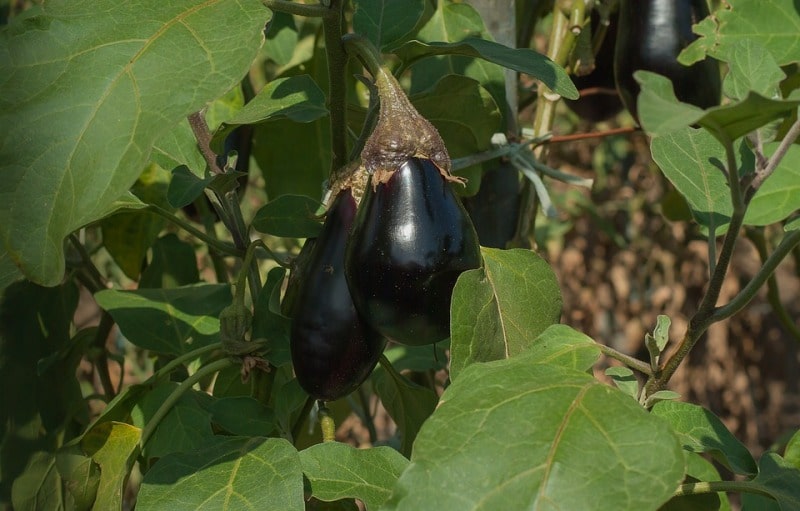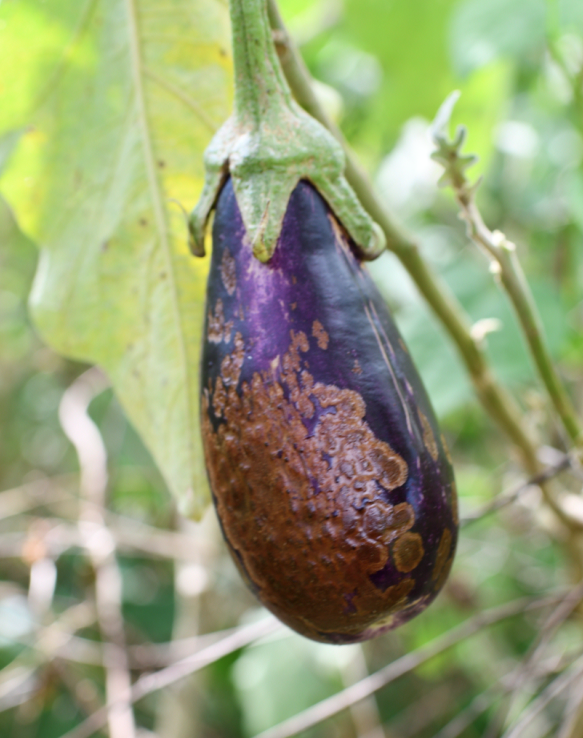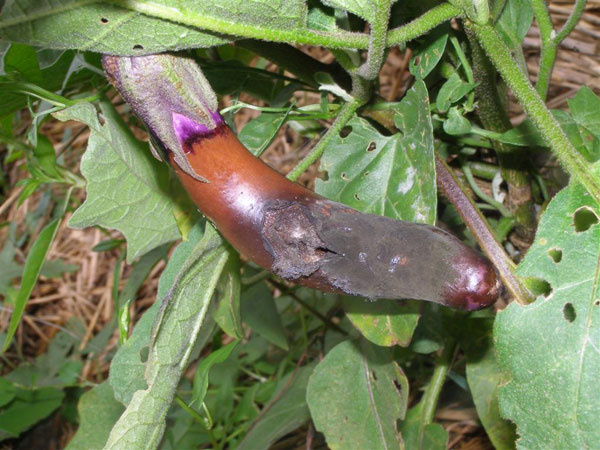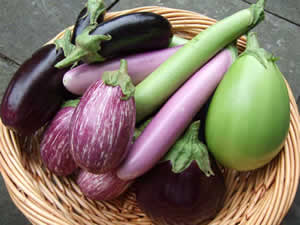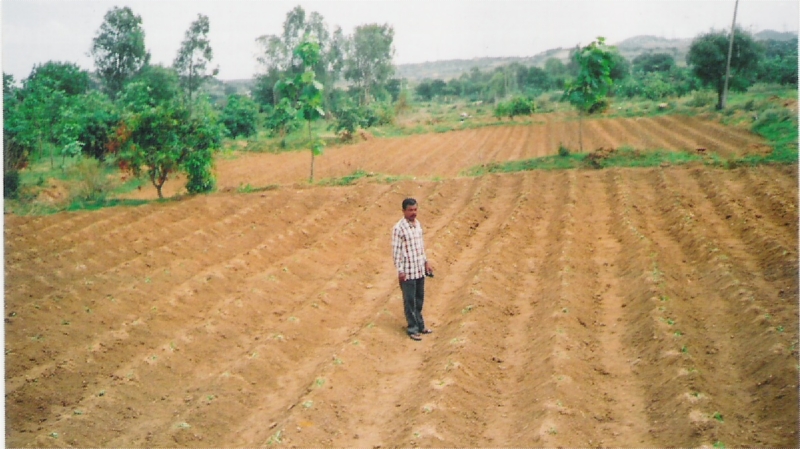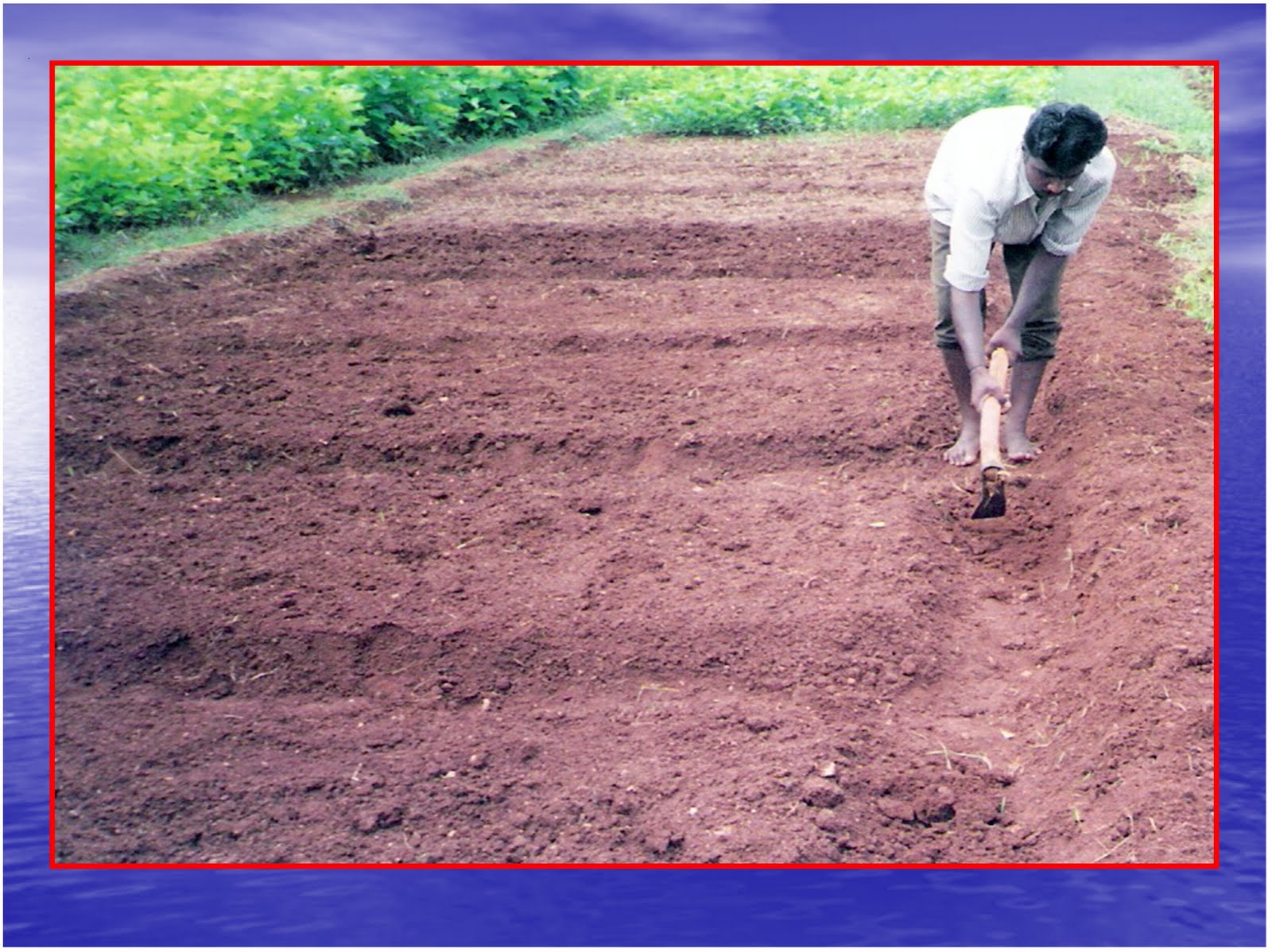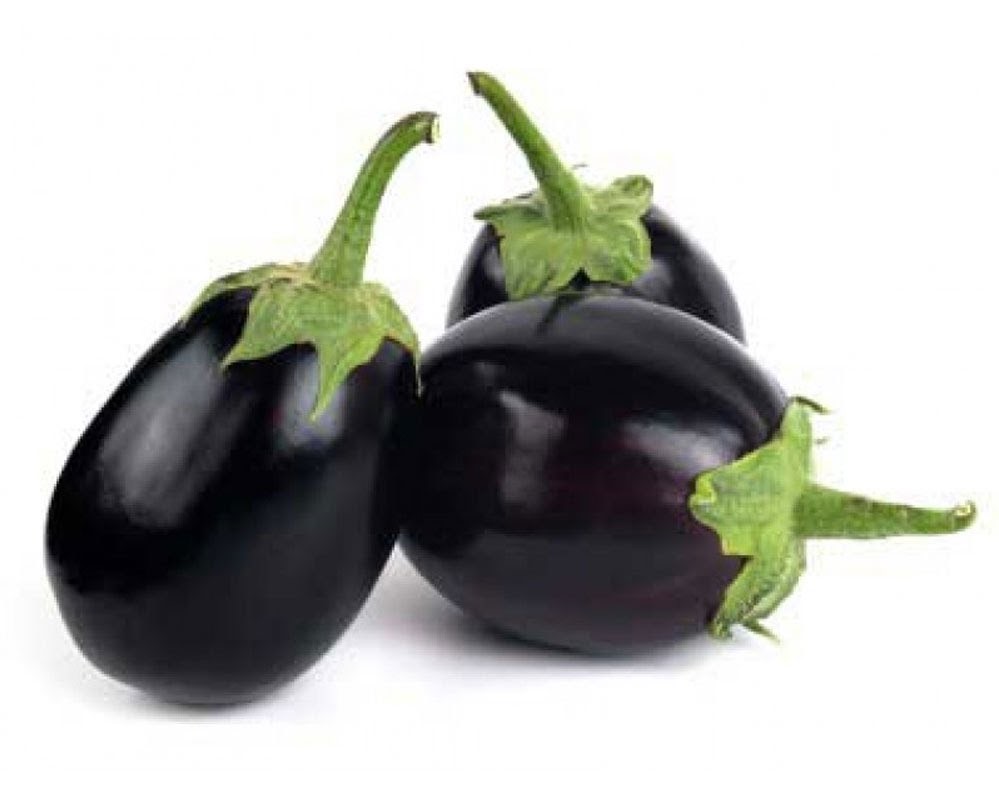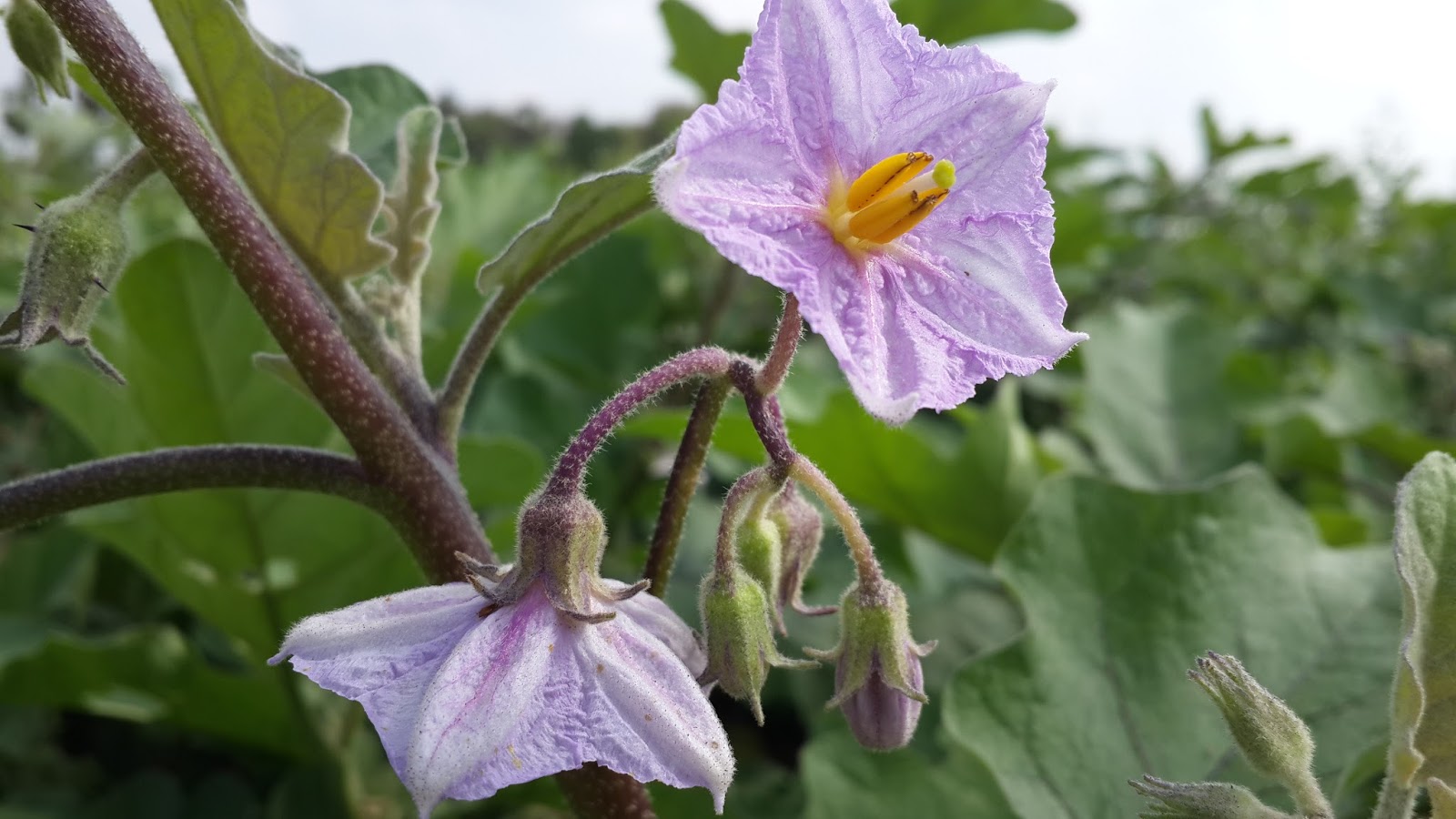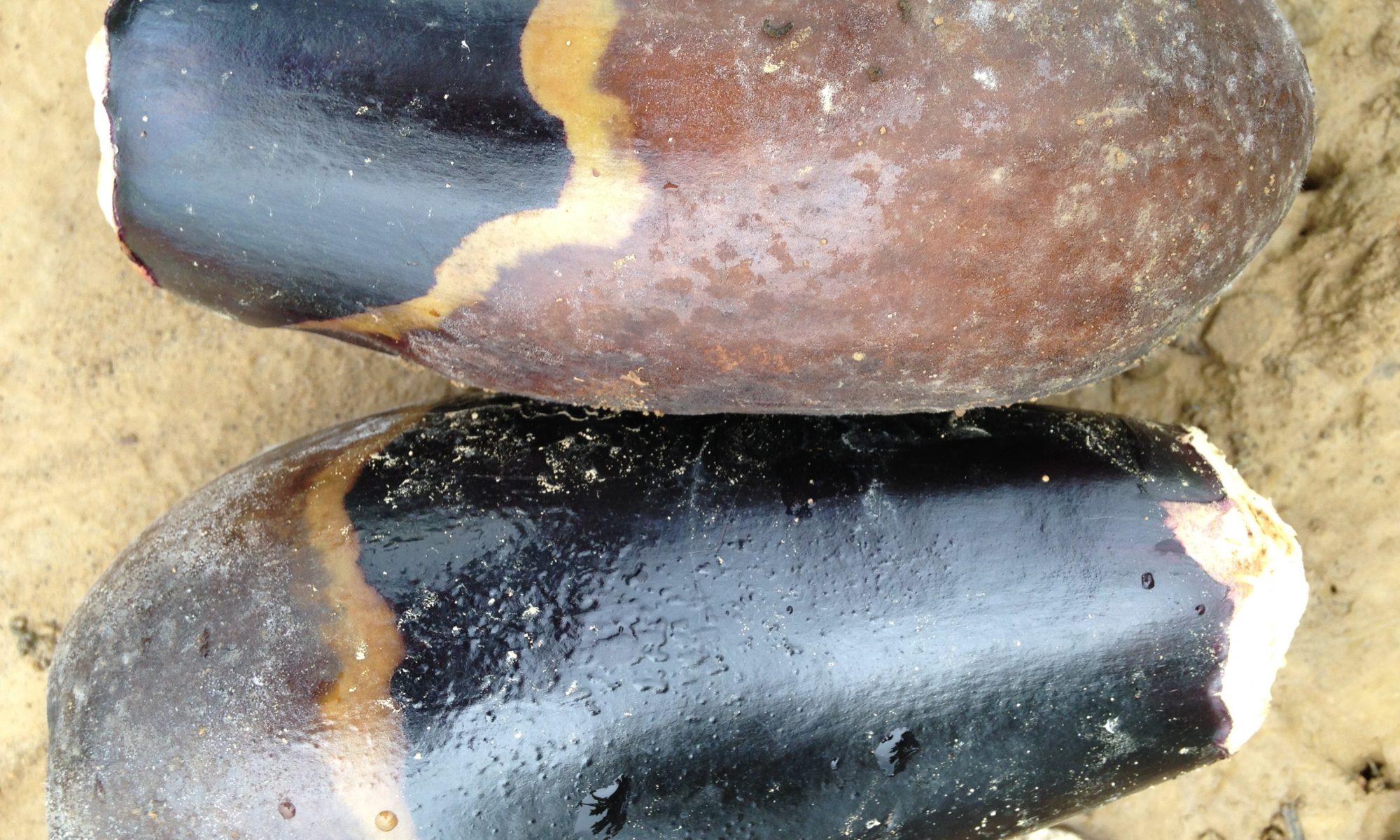- The nursery is sown in February-March for rainy season brinjal.
- Brinjal plant is ready for transplanting in the main field after 30-40 days.
- Add the fertilizer amount to the field according to the soil test report or
- Before transplanting the plant, apply 90 kg Urea, 250 kg Single Super Phosphate (SSP), and 100 kg Muriate of Potash (MOP) along with FYM.
- Divide 90 kg of Urea into three parts. The first part of urea is given 30-40 days after transplanting, the second part after the next 30 days, and the third installment or part in the form of top dressing at the time of flowering.
Control of Fruit Rot in Brinjal
- Remove and destroy of the affected fruits.
- spraying the crop with Mancozeb 75% WP @ 400 Gm/Acre or Zineb 75% WP@ 400 Gm/acre or Captan 70% + Hexaconazole 5% WP at an interval of 10 days.
Like and share with other farmers by clicking on button below
ShareFruit Rot in Brinjal
Symptoms
- Phytophthora rot occurs when fruits are in contact with the soil or mycelia grows through the peduncle into the fruit.
- infected fruit tissue is water-soaked and dark-green at first; later white mycelium and sporangia develop on the surface of the affected area and, within several days, consume the entire fruit.
- Fruit affected by these fungi dry rapidly and shrivel but do not drop.
Like and share with other farmers by clicking on the button below
ShareDo’s and Don’ts for Brinjal Cultivation
Do’s and Don’ts for Brinjal Cultivation:-
Do’s
- Timely sowing.
- Field sanitation.
- Apply pesticides only when required.
- Wash brinjal before consumption.
Don’ts
- Don’t apply more than the recommended dose of the pesticide.
- Don’t repeat the same pesticide consecutively.
- Don’t apply mixture of pesticides.
- Don’t apply highly hazardous insecticides like monocrotophos in vegetables.
- Don’t apply pesticides just before harvesting.
- Don’t consume produce till 3-4 days after application of pesticides.
Like and share with other farmers by clicking on button below
ShareLand preparation for Brinjal
- Proper drainage is essential for the growth of brinjal.
- Soil should be prepared to a fine tilth by 4-6 ploughings.
- Fym should be incorporated in soil at the time of final plowing.
Like and share with other farmers by clicking on the button below.
ShareNursery preparation in brinjal
- Raised beds are necessary to avoid the problem of waterlogging in heavy soils.
- In sandy soils, however, sowing can be taken up in flatbeds.
- Raised beds of size 3 x 1 m and 10-15 cm in height are prepared.
- About 70 cm distance is kept between two beds to carry out operations of watering, weeding, etc.
- The surface of the beds should be smooth and well leveled. Well-decomposed FYM or leaf mold may be mixed with the soil at the time of bed preparation.
- To avoid mortality of seedlings due to damping off, the drenching of the beds with Mancozeb 75% WP @400-600 gm/acre, is effective.
Like and share with other farmers by clicking on the button below
ShareHow to protect Brinjal from Fruit Borer
- The damage to the fruits starts soon after transplanting and continues till harvesting of the fruits.
- It can reduce yield by as much as 70%.
- Multiple overlapping generations occur in warm climates.
- The short pinkish larva of the pest initially bore into the terminal shoots resulting in withering and drying of the shoot.
- In the later stage, it bores into the young fruits by making holes and feeds inside and lose their market value fruits plugged with excreta.
Management:
- Install pheromone trap @ 5 /acre .
- Continuous cropping of brinjal on the same piece of land should be avoided.
- Fruits showing boring should be picked and destroyed.
- Spray the crop with Cypermethrin 10% EC @ 300ml/acre or Lambda Cyhalothrin 5% EC @ 200-250 ml/acre at fortnight intervals starting from 35 days after transplanting to control the pest.
- Best results are obtained when all the affected fruits are removed before spraying.
Like and share with other farmers by clicking on button below.
ShareYellowing leaves may cause more damage in Brinjal
-
- Brinjal is one of the most widely grown vegetables in the world including India.
- Yellowing on the leaves of brinjal may indicate a more serious problem.
- Yellowing in the leaves can be due to various reasons such as insect (spider, bug, and juice insect), diseases (wilt and viral-borne disease) and deficiency of nitrogen, etc. Due to yellowing in plants, the yield is less and consequently, there is an economic loss.
- To increase the availability of nitrogen, mix nitrogen fixation and phosphorus-soluble bacteria with nitrogen fertilizers in the field @ 2 kg/acre.
- To protect the brinjal crop from insect problem, can spray propergite 50% EC @ 400 ml (for spider) and Dichlorvos 76% EC @ 300 ml (for lace bug) per acre.
- To prevent yellowing from diseases, spray carbendazim 12% + Mancozeb 63% WP @ 200 gram and streptocycline at 20 gram/acre, and control the disease spreading insects.
Like and share with other farmers by clicking on button below.
ShareHormone application in brinjal
- Plant growth regulators are used to increase the yield of brinjal.
- After 45-50 days of sowing, the flowering stage starts in the brinjal crop.
- Spray Homobrassinolide 0.04% W/w 100-120 ml/acre.
Like and share with other farmers by clicking on the button below.
ShareControl of fruit rot in brinjal
- Infected fruit tissue is water-soaked and dark-green at first; later white mycelium and sporangia develop on the surface of the affected area and, within several days, consume the entire fruit.
- Fruit affected by these fungi dry rapidly and shrivel but do not drop.
- Remove and destroy affected fruits.
- Spraying Mancozeb 75% WP @ 400 gm/acre or Tebuconazole 25.9% EC @ 250 gm/ acre.
Like and share with other farmers by clicking on button below
Share
